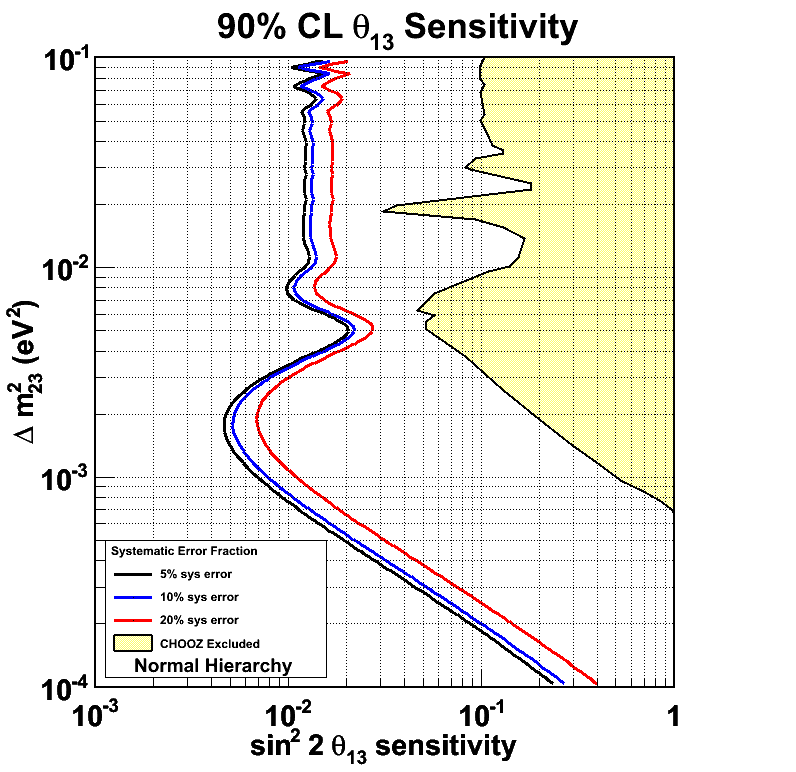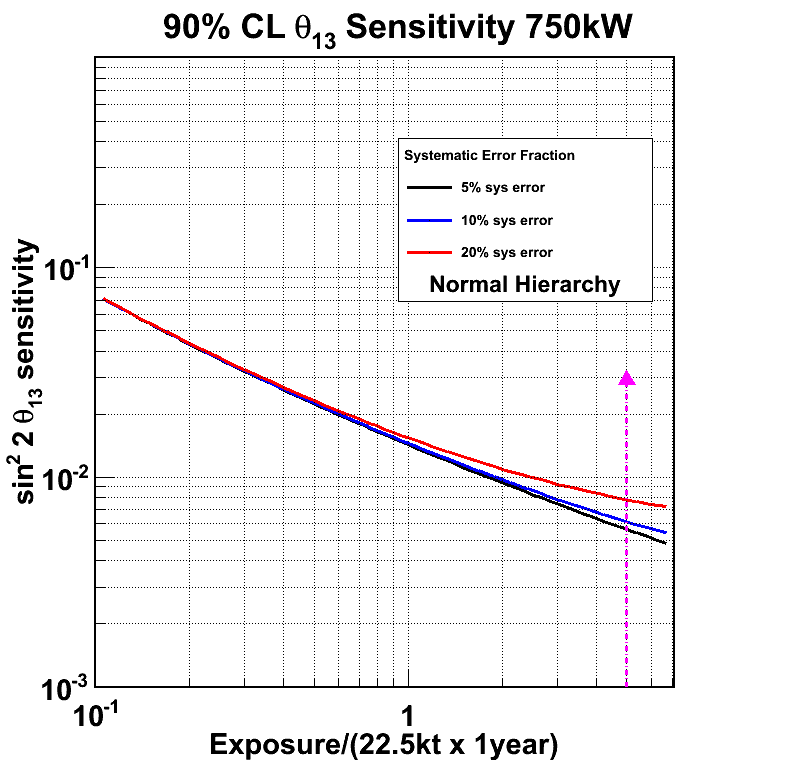T2K Scientific Overview
The Beam
The T2K beam is generated at J-PARC: a brand new accelerator facility on the east coast of Japan.
The J-PARC accelerator chain begins with two Linacs feeding protons into a 3GeV synchrotron. These are sent either to a neutron and muon facility, for materials and life sciences, or passed on to be accelerated further in the 30GeV main ring. In addition to a variety of hadronic experiments, it is this ring which is used for the generating the T2K neutrino beam.
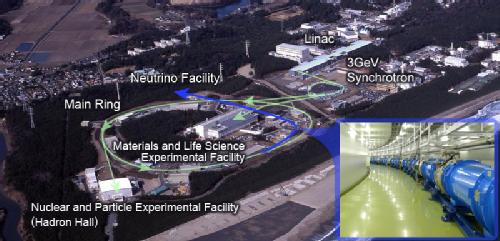
With a power of 0.75MW the proton beam is directed onto a graphite target which will reach peak temperatures of over 700°C. Collisions in the target will generate pions and kaons which are then selected and focused by three magnetic horns with fields up to 2.1T and directed down a 98m decay pipe down which they decay to produce a beam of predominantly muon neutrinos (there is a small background of electron neutrinos from kaon decays and secondary decays of muons ~4%). At the end of the decay pipe is the muon monitor: a 7x7 grid of ionisation chambers, which give the experiment a handle on the beam production rate.
Conventional neutrino beams directed towards their detectors produce a complex spectrum of neutrino energies with a large number of background events, making the final oscillation analysis difficult, but T2K will be the world's first "off-axis" neutrino experiment, with the near and far detectors both placed 2.5° off the beam direction. Placing the detectors off-axis means that they only see Pion and Kaon decays in which the neutrino comes off within a small angular range, producing a much cleaner energy spectrum (the high energy tail is much reduced, cutting out background NC events in the detectors).
The Near Detectors
Downstream from the target (280m) lie T2K's two near detectors: INGRID and ND280.
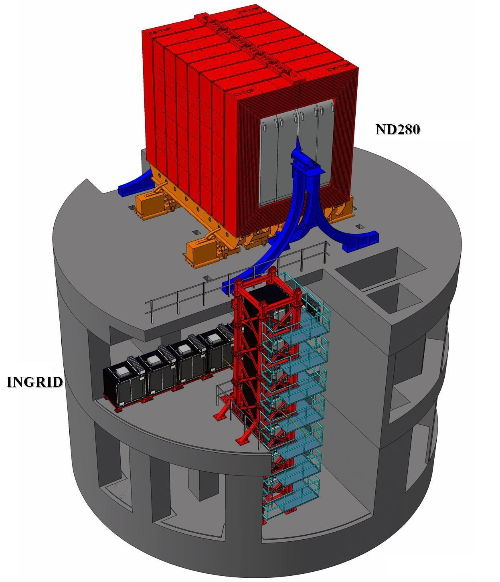
ND280
ND280 is a hybrid detector, situated off the beam axis, which will be responsible both for measuring the initial neutrino flux from the beam and for making neutrino-nucleon cross-section measurments (essential for predicting the expected flux at the far detector). It is built within the magent originally used in the famous UA1 experiment.
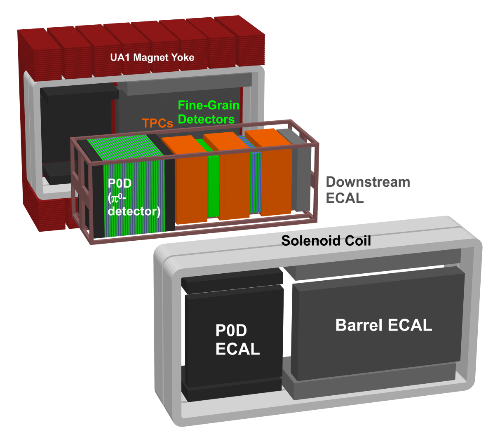
The central part of the detector, the "basket", contains multiple tracking modules. The most upstream of these is the Pi-Zero Detector (P0D): X-Y layers of triangular scintillator bars are seperated by either lead sheets or target volumes. These target volumes can be filled/emptied with water to provide a target comparable to that at the far-detector enabling cross-sections to determine the interaction rate at the far-detector. The cross-section for neutral pion production in water is of particular importance to the experiment since this represents the largest background for νe appearance at Super-K. With this measurement in mind, the X and Y scintillator planes are separated by a lead foil to encourage photon conversion.
Downstream of the P0D is the "tracker": three Time Projection Chambers (TPCs) seperated by two Fine Grained Detectors (FGDs). The TPC makes high-resolution momentum measurements from curvature in the magnetic field of particles produced in the FGDs which are scintillator-only detectors for good position resolution. The first FGD uses the carbon scintillator as its target mass while the second FGD contains six water targets. Comparison of the interaction rates between the two FGDs will assist in using the (predominantly scintillator) ND280 measurements to predict the (water) interaction rate at Super-K.
The most downstream module in the basket is the Downstream Electromagnetic Calorimeter (ECal). It's primary responsibility is to catch high-momentum tracks escaping the tracker to reconstruct their energy/momentum.
The basket is entirely surrounded by the Barrel (around the tracker and downstream ECal) and P0D ECals, each of which is composed of six (two side, two top and two bottom) modules. Though the ECal detectors are similar in many respects there are some differences in construction. The Barrel ECal will assist in the reconstruction of tracks escaping the tracker at high angles, while the P0D ECal, which is too small to reconstruct tracks/showers, will catch escaping pi-zeros which have not converted in the P0D and veto incoming particles. Construction of all six P0D ECal modules is taking place here, at the University of Warwick.
Finally, gaps in the UA1 Magnet have been instrumented with large scintillator "paddles" to produce the Side Muon Ranging Detector (SMRD) which will tag outgoing muons as well as vetoing incoming cosmic rays and particles from rock-neutrino interactions.
INGRID
INGRID is beam monitoring and profiling detector which consists of seven vertical and seven horizontal modules which combined form a cross centred on the beam axis. Each module is constructed of layers of iron and scintillator, which are read out using the same fibres, photosensors and electronics as the ND280 ECals. It is placed upstream of the ND280.
The Far Detector
Super-Kamiokande (Super-K) is probably the most famous experiment in the history of neutrino physics. Originally built to search for proton decay, it played a significant role in the discovery and study of both solar and atmospheric neutrino oscillations. It has also served as the far-detector for the K2K oscillation experiment and will now be utilised once again as the far-detector for T2K.
Super-K is sited near Kamioka, around 300km west from the T2K beamline at J-PARC, in a disused mine under Mount Kamiokako to shield it from cosmic-ray muons. The experiment itself is a 50,000ton water-Cherenkov detector observed by over 10,000 photo-multiplier tubes (PMTs). By profiling the Cherenkov rings it can differentiate muon-neutrino and electron-neutrino induced interactions and provides the vital directional information required to select neutrinos originating from T2K.
Physics Reach
|
|
|
The T2K experiment began taking data in early 2010 with early results expected in summer 2011.


